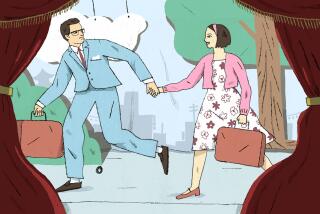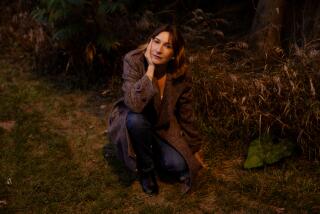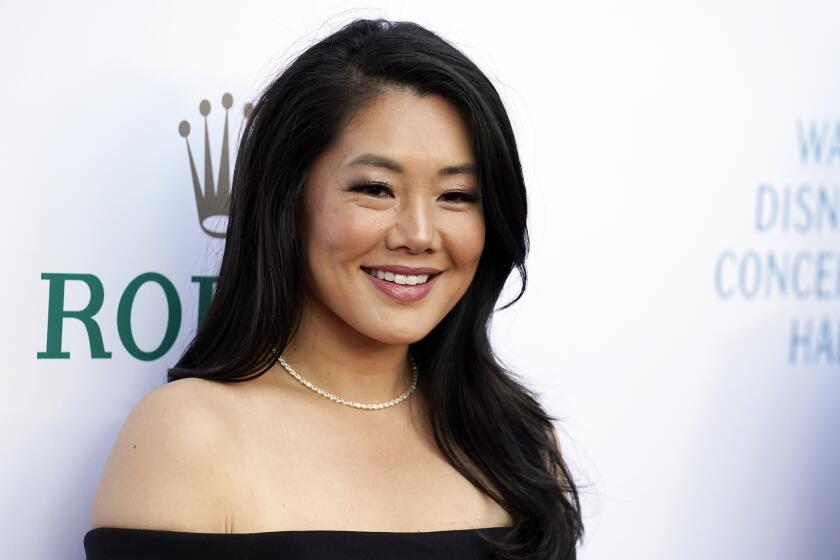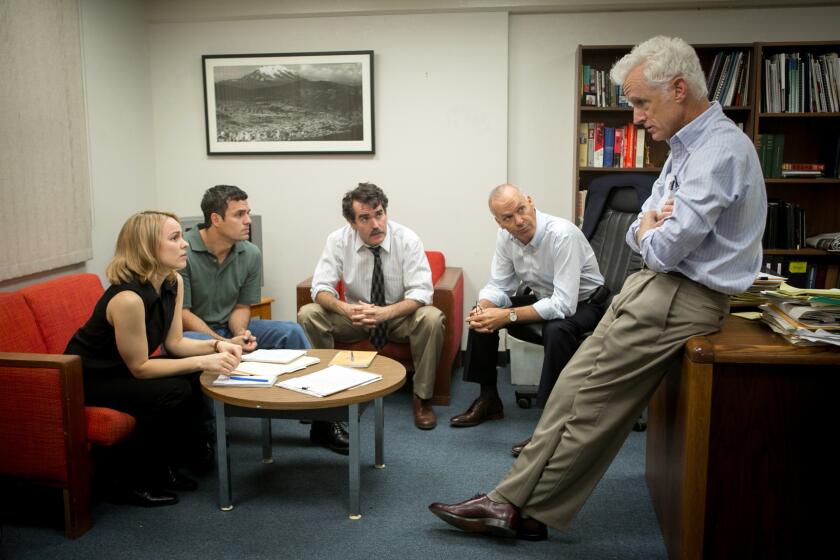‘Anne Frank: The Book, The Life, The Afterlife’ by Francine Prose
Last week, a video went up on YouTube that shows the only motion picture images ever taken of Anne Frank. It’s just a quick glimpse, a few seconds of film.
A newlywed couple leaves an Amsterdam apartment building. People hover on the sidewalk, watching them go. Then the camera pans upward -- and there, gazing down from a balcony, is Anne Frank.
The date is July 22, 1941. She’s 12 years old. It’s a year before she and her family will go into hiding, less than four years before she will die of typhus at Bergen-Belsen in the waning days of World War II. We watch her watching, watch her look back over her shoulder, quick and coltish, as if in response to someone inside.
“As familiar as we are with images of Anne Frank,” Francine Prose writes in her provocative “Anne Frank: The Book, the Life, the Afterlife,” “as inured as we may think we are to the sight of her beautiful face, the film pierces whatever armor we imagine we have developed. . . . It’s less like watching a film clip than like having one of those dreams in which you see a long-lost loved one or friend. In the dream, the person isn’t really dead. You must have been mistaken. You wake up, and it takes a few moments to understand why the dream was so cruelly deceptive.”
Frank would have turned 80 this year, had she remained among the living; in another image available on the Internet, a forensic pathologist has created a projection of how she might have looked. It’s as shocking, in its way, as that YouTube video, for all these years later, Frank seems fixed to us: as entrenched in our imaginations as the girl in the secret annex, accessible and inaccessible all at once.
She’s the “Jewish Joan of Arc,” a secular saint whose most famous utterance -- “in spite of everything I still believe that people are really good at heart” -- was taken out of context, “torn out of its bed of thorns,” in Cynthia Ozick’s electric phrase. Prose quotes the entire passage in “Anne Frank,” and part of it is worth repeating because of what it says about the line between illusion and reality, between how we think of Frank and who she was:
“It’s really a wonder that I haven’t dropped all my ideals, because they seem so absurd and impossible to carry out. Yet I keep them, because in spite of everything I still believe that people are really good at heart. I simply can’t build up my hopes on a foundation consisting of confusion, misery, and death. I see the world gradually being turned into a wilderness, I hear the ever approaching thunder, which will destroy us too, I can feel the sufferings of millions, and yet, if I look up into the heavens, I think it will all come right, that this cruelty too will end, and that peace and tranquillity will return again.”
For Prose, that’s a key moment -- in terms of both Frank’s diary and our ability to read it plain. Here, we see realism collide with romanticism, despair intermingle with hope.
What makes Frank so essential, Prose argues, is precisely such a tension, her “sensibly and understandably mixed view of human nature.” Her diary is not, as we have come to think of it, a universal story, but first and foremost a particular one. “I had become increasingly impatient with the notion of Anne Frank as the perky teenage messenger of peace and love . . . ,” Prose writes. “Such a misreading of Anne’s book and her ‘message,’ I’d thought, constituted a denial of what happened to her after the diary ended, and of the cruel fates that befell millions of equally innocent men and women and children.”
With “Anne Frank,” then, Prose means to remove Frank from the wistful amber of her posthumous celebrity and reveal her to us in a more realistic light.
This, of course, is what Frank’s writing has always seemed to offer, the direct expression of “a girl who kept a diary for the last two years of her life.” In Prose’s penetrating analysis, however, the book is less the serendipitous reflection of a precocious adolescent than the intentional work of a young author who tailored her material very much for effect.
Although she’d kept the diary since 1942, it was only in March 1944, after a radio broadcast in which Gerrit Bolkestein, who was “minister of education, art, and science in the exiled Dutch government, called for the establishment of a national archive to house the ‘ordinary documents’ -- diaries, letters, sermons, and so forth -- written by Dutch citizens during the war,” that Frank began to think about her writing in a new way. She revised the manuscript, giving it a title, “Het Achterhuis” (“literally, ‘the house behind’ or ‘the annex’ ”), clarifying, cutting, changing things around.
“Anne intended ‘Het Achterhuis’ to begin with the June 20, 1942, entry,” Prose tells us, “in which she . . . wonders who will be interested in the ‘unbosomings of a thirteen-year-old schoolgirl.’ The passage was composed at some point during the spring of 1944.” What Frank is doing there is “putting herself in her state of mind of two weeks before she went into hiding” -- in other words, constructing a narrative in the most conscious sense.
The notion of consciousness permeates “Anne Frank,” pushing us to rethink both the diary and what it means. There’s no criticism, Prose argues, in calling Frank’s book crafted; if anything, the opposite is true.
Over the years, her father, Otto, who alone among the family survived the war and prepared the diary for publication, was taken to task for editing passages on his daughter’s sexuality or her conflicts with his wife. “In fact,” Prose writes, “what seems most probable is that his editing was guided by the instincts of a bereaved father wanting to give the reader the fullest sense of what his daughter had been like.”
Such a statement sits at the center of Prose’s argument -- because of what it says not just about the book but about the life. It’s hard to remember, with Anne Frank now a symbol of human perseverance, that there was nothing inevitable about her diary, that she was a person responding to events. It’s hard to remember that the Franks were caught, and Anne died horribly, naked, lice-ridden, starving, racked by disease.
Even that YouTube video, so idyllic on the surface, portrays a world already past the tipping point, with Jews “forbidden to frequent parks, zoos, cafes, museums, public libraries, and auctions.” In such a landscape, Prose insists, “neither . . . the will to survive with the maximum humanity and the will to extinguish with the maximum brutality . . . makes sense without the other,” which is the true, discomforting legacy of Anne Frank and her book.
More to Read
The biggest entertainment stories
Get our big stories about Hollywood, film, television, music, arts, culture and more right in your inbox as soon as they publish.
You may occasionally receive promotional content from the Los Angeles Times.







